
At the student exhibition Galegion in DOX
Publisher
Petr Šmídek
28.08.2020 08:30
Petr Šmídek
28.08.2020 08:30
Czech Republic
Prague
Holešovice
Petr Hájek
Petr Hájek Architekti
Last week, the exhibition of students of Professor Petr Hájek ended at the DOX gallery in Holešovice. It was a ten-year retrospective of two studios led at the Czech Technical University in Prague (Hájek/Hulín) and the Academy of Fine Arts in Bratislava (Hájek/Rypáková). The title Galegion was borrowed from mathematician Ivan Havel, and the theoretical foundations were laid by Monika Mitášová and Marian Zervan from Trnava University.
For some architects, form is important, for others, the concept or detail. The best can balance everything together, yet still operate within a limited professional field. Petr Hájek often finds inspiration outside the field of architecture, from space scientists or automotive designers, who are the true heroes of today’s time. Architecture has always been a somewhat frozen sector and rarely (perhaps with the exceptions of Gothic and functionalism) has it not lagged behind other arts.
In Hájek's studios, joint assignments are worked on, where each student can find their suitable position. There is always a precise brief, maximum commitment is expected, and the work usually doesn’t end with semester evaluation. It doesn’t go into a drawer but leaves the academic environment to spark public discussion. The final outputs deserve to be taken on by a publisher. Hájek acquired this precision as a student of Alena Šrámková (CTU) and Emil Přikryl (AVU) and does not intend to lower the bar.
We became acquainted with the works of his students at the DOX Center already at the end of 2011 at the exhibition Anastomosis, which aimed to find new innovative approaches in the field of urbanism. In 2014, Hájek organized a colloquium in the riding hall in Litomyšl on experimental teaching of architecture in the Czech Republic and Slovakia. In the same year, he presented an exhibition titled Diagram at the NTK gallery, seeking the architectural and urban limits of the flood island of Štvanice, and a year later he returned to DOX with the exhibition Urbo Kune (in Esperanto "shared city") initiated by the idea of "composed urbanism" of Austrian architectural theorist Jan Tabor.
Some visionaries entrusted the future of architecture to software scripts to create virtual habitats for us. Hájek's equally bold utopias, which incorporate the latest knowledge in the fields of science and technology, are surprisingly attainable for the physical person. While some studios specialize in urban acupuncture through small interventions in the existing urban structure, Hájek's studio ventured to the opposite end of the scale and examined the largest possible limits of development.
The title of the exhibition Galegion at the DOX Center stems from the semester assignment of "composed cities," which would integrate the institution of a film archive, museum, and gallery. Among the nine presented projects was also a space city in the lunar crater Shackleton, an underground city in Salzburg carved into the rock mass, a city on rails at one of the largest railway transshipment hubs in Europe, a city above the Negrelli viaduct leveraging the potential of a linear structure between Karlín and Holešovice, a project of topographical baths Arnika, or an artificial island Adriaport in the Adriatic Sea.
For Hájek, utopian projects are a springboard for his own realizations. Those who did not manage to visit the exhibition of Hájek's students in DOX throughout the whole semester need not only regret but can plan a trip this autumn to České Budějovice, where the opening of the exhibition Principles will take place on September 9, 2020, at the local House of Art, where Petr Hájek drew inspiration from the laws of optics and acoustics.
For some architects, form is important, for others, the concept or detail. The best can balance everything together, yet still operate within a limited professional field. Petr Hájek often finds inspiration outside the field of architecture, from space scientists or automotive designers, who are the true heroes of today’s time. Architecture has always been a somewhat frozen sector and rarely (perhaps with the exceptions of Gothic and functionalism) has it not lagged behind other arts.
In Hájek's studios, joint assignments are worked on, where each student can find their suitable position. There is always a precise brief, maximum commitment is expected, and the work usually doesn’t end with semester evaluation. It doesn’t go into a drawer but leaves the academic environment to spark public discussion. The final outputs deserve to be taken on by a publisher. Hájek acquired this precision as a student of Alena Šrámková (CTU) and Emil Přikryl (AVU) and does not intend to lower the bar.
We became acquainted with the works of his students at the DOX Center already at the end of 2011 at the exhibition Anastomosis, which aimed to find new innovative approaches in the field of urbanism. In 2014, Hájek organized a colloquium in the riding hall in Litomyšl on experimental teaching of architecture in the Czech Republic and Slovakia. In the same year, he presented an exhibition titled Diagram at the NTK gallery, seeking the architectural and urban limits of the flood island of Štvanice, and a year later he returned to DOX with the exhibition Urbo Kune (in Esperanto "shared city") initiated by the idea of "composed urbanism" of Austrian architectural theorist Jan Tabor.
Some visionaries entrusted the future of architecture to software scripts to create virtual habitats for us. Hájek's equally bold utopias, which incorporate the latest knowledge in the fields of science and technology, are surprisingly attainable for the physical person. While some studios specialize in urban acupuncture through small interventions in the existing urban structure, Hájek's studio ventured to the opposite end of the scale and examined the largest possible limits of development.
The title of the exhibition Galegion at the DOX Center stems from the semester assignment of "composed cities," which would integrate the institution of a film archive, museum, and gallery. Among the nine presented projects was also a space city in the lunar crater Shackleton, an underground city in Salzburg carved into the rock mass, a city on rails at one of the largest railway transshipment hubs in Europe, a city above the Negrelli viaduct leveraging the potential of a linear structure between Karlín and Holešovice, a project of topographical baths Arnika, or an artificial island Adriaport in the Adriatic Sea.
For Hájek, utopian projects are a springboard for his own realizations. Those who did not manage to visit the exhibition of Hájek's students in DOX throughout the whole semester need not only regret but can plan a trip this autumn to České Budějovice, where the opening of the exhibition Principles will take place on September 9, 2020, at the local House of Art, where Petr Hájek drew inspiration from the laws of optics and acoustics.
The English translation is powered by AI tool. Switch to Czech to view the original text source.
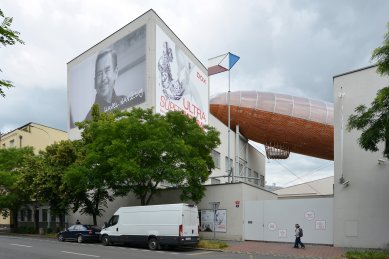
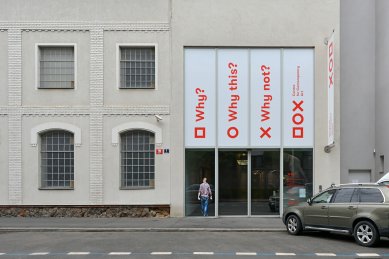
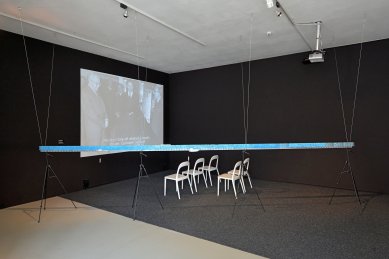
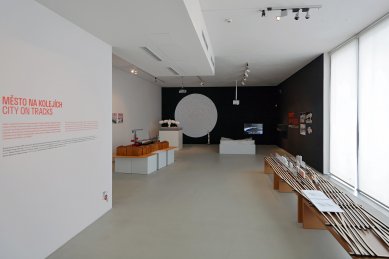
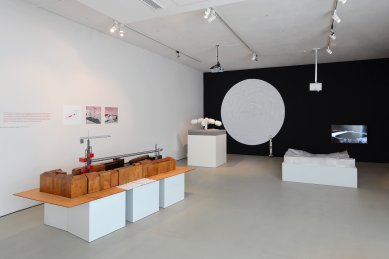
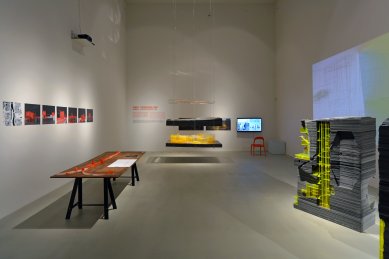
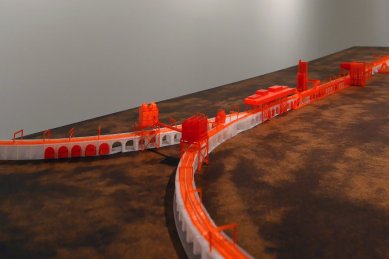
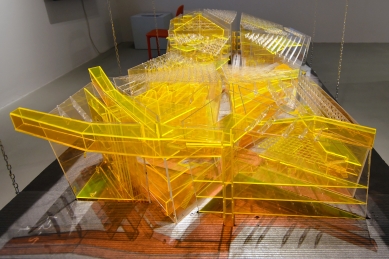
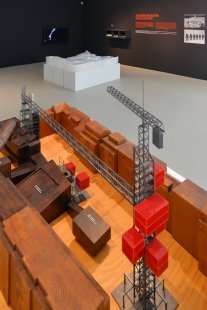
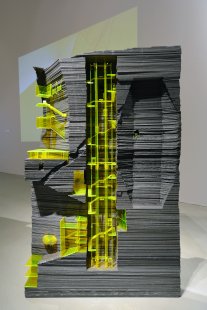
0 comments
add comment
Related articles
0
03.02.2021 | In the mirrors of mirrors
0
12.02.2020 | Galegion: Utopian City - Exhibition at DOX
0
11.09.2018 | The Architect of the Year 2018 award was won by Petr Hájek
0
22.06.2017 | Transcendence of Architecture: Petr Hájek – Ad triangulum
0
27.11.2015 | In DOXu, there is a model of a utopian city designed by students
0
08.05.2014 | Colloquium: experimental architecture in schools
0
06.04.2012 | Anastomosis or About Today's Cities and One Rose…
0
30.12.2011 | DOX will present the exhibition Anastomosis











